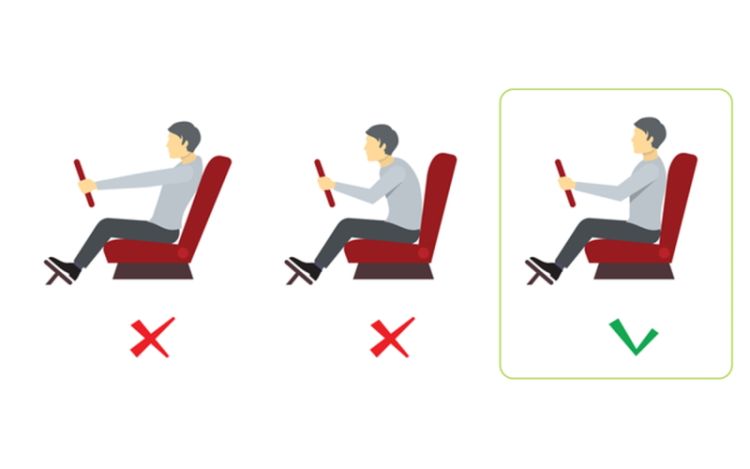Driving for a long period of time can lead to driver discomforts, like back pain and back problems, muscle, bone, and joint pains. The good news is that some techniques can help you correct poor driving posture and avoid serious injuries.

While vehicles are sometimes the cause of drivers’ injuries, poorly positioned drivers also have a higher risk of severe injury. Even more, if they get into a collision.
To correct poor driving posture and avoid these risks, take a look at these 7 tips:
Support your back
Slide your tailbone as near to the back of the seat as possible. Leave a two-to-three-finger gap between the back of your knees and the front of the seat. Moreover, adjust your seat angle between 100 and 110 degrees to put minimal pressure on the back. If the seat is set too far back, it forces you to lean forward, causing pain and numb the fingers.Avoid sitting too close to the steering wheel
According to studies, drivers whose chests were closer to the wheel were substantially more likely to have a severe head, neck, and chest injury in front- and rear-end impacts.Adjust your headrest
The top of the headrest should be placed between the top of the ears and the head, touching only the back of the head when sitting comfortably. The headrest is also crucial to reduce the risk of serious injury in the event of a rear-end collision.Use armrests
Armrests keep the arms from hanging down for an extended period. For better ergonomics, they should be aligned at the elbows and bent at an angle of about 120°. If the arms are overstretched, it may cause shoulder and neck pain.Use lumbar support
Set your vehicle's adjustable lumbar support (using both the front-back and up-down controls) to feel an even pressure from hips to shoulders. If your vehicle lacks automatic support, a lumbar pillow or even a rolled-up towel can help.Adjust the vehicle mirrors
Prevent neck strain by properly adjusting your rear-view and side mirrors. The correct position is when you can see the traffic behind without having to turn your neck.Take breaks and stretch your legs
Even with the best driving posture, fatigue inevitably sets in when you drive for long periods. So take regular breaks: park safely at a rest stop or other designated place to get out of the car and stretch or even take a short walk to reduce the likelihood of muscle cramps and pain.Overall, having a proper driving posture benefits drivers in general, as it significantly reduces back pain and spine problems. In addition, this extra care with posture translates into greater wellbeing for drivers and a safeguard for companies, often losing workforce and money due to drivers' health issues related to poor driving posture.
Post tags:
- Frotcom
- Improve driving posture
- Driving posture
- Heavy-vehicle drivers
- Seat position
- Poor driving posture

